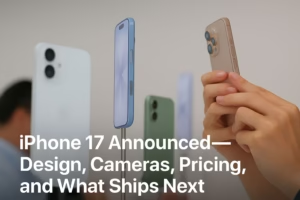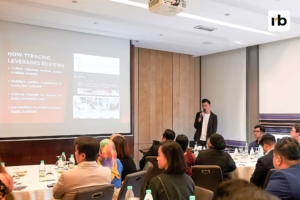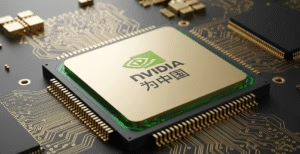When Nvidia set out to design a fresh chip for the Chinese market, it wasn’t just chasing a performance upgrade. The project, known inside the industry as the B30A, is meant to outpace the H20, currently the most advanced processor Nvidia is allowed to sell under U.S. export rules.
The chip is built on Blackwell architecture, Nvidia’s latest platform, and it represents a balancing act: keep pushing the frontiers of AI, but do it without tripping over Washington’s tightening restrictions. At the same time, demand for cutting-edge computing inside China has never been higher.
AI Rivalry Beyond the Circuit Boards
China remains one of Nvidia’s largest customers, accounting for more than a tenth of its revenue last year. But access comes with strings attached. Washington has set hard limits on how much computing power can be shipped overseas. What looks like a trade issue on paper is, in reality, a fight over who controls the future of AI.
The H20, released after the 2023 restrictions, was already seen as a half-step solution. Now, with additional conditions including revenue-sharing arrangements with the U.S., Nvidia has to walk an even finer line. The B30A sits right at that line: strong enough to keep Chinese developers invested in its ecosystem, but constrained enough to get past regulators.
A Look Inside the B30A
Unlike the flagship B300, which uses a dual-die setup, the B30A is expected to come with a single-die design. That means it won’t quite match the raw power of Nvidia’s top-tier chips, but it gains efficiency and, more importantly, it reduces the risk of breaching U.S. limits.
Industry chatter suggests the chip will ship with high-bandwidth memory (HBM) and NVLink interconnects, giving Chinese firms enough muscle to train large AI models without constant bottlenecks. Nvidia’s message here is clear: performance that satisfies developers, but not so much that it alarms policymakers.
Samples could reach Chinese partners within weeks, though final clearance is still pending.
Huawei and the Push for Homegrown Power
Of course, regulation isn’t Nvidia’s only challenge. Chinese chipmakers, led by Huawei, have been racing ahead with their own processors.
Huawei’s latest offerings show real progress on speed, but they continue to trail Nvidia in two crucial areas: software support and memory bandwidth. That’s why major firms like Alibaba, Tencent, and ByteDance still lean heavily on Nvidia hardware, the ecosystem around it is mature, reliable, and proven at scale.
But if U.S. restrictions continue to tighten, the pressure for China to go all-in on domestic chips will only intensify.
Politics in the Background
Washington’s position has been consistent: even a scaled-down chip could help China close the AI gap. Nvidia, for its part, has managed to resume certain sales by striking deals that return a slice of revenue to the U.S. government.
Beijing has taken a more tactical approach. State media occasionally casts doubt on Nvidia’s products, hinting at “security concerns,” but regulators stop short of banning them outright. Analysts read this as a holding pattern, relying on Nvidia for now, while giving local champions time to catch up.
A Global View
Nvidia’s chips aren’t just shaping the AI race in China. In the Middle East, governments are pouring billions into building AI ecosystems and with fewer restrictions in place, much of that investment flows straight to Nvidia.
The contrast is telling: in China, Nvidia moves carefully, negotiating compromises. In the Gulf, it expands freely. Together, these examples underline a simple truth: AI hardware is no longer just about technology. It’s about power, security, and influence.
The Fine Print Behind Every Breakthrough
The B30A project is more than a new chip. It’s a snapshot of how technology, politics, and business collide in real time.
For companies, the message is straightforward: breakthroughs in AI won’t be defined only by engineers in labs, but also by the bargaining tables in Washington and Beijing. For the rest of us, it’s a reminder that every leap in computing power comes with strings attached — sometimes invisible, but always there.
References
Just as Nvidia adapts to export restrictions, cloud providers are redefining AI deployment—explore how in OpenAI Models Land on AWS: Why This Changes the Game for Cloud AI.
















